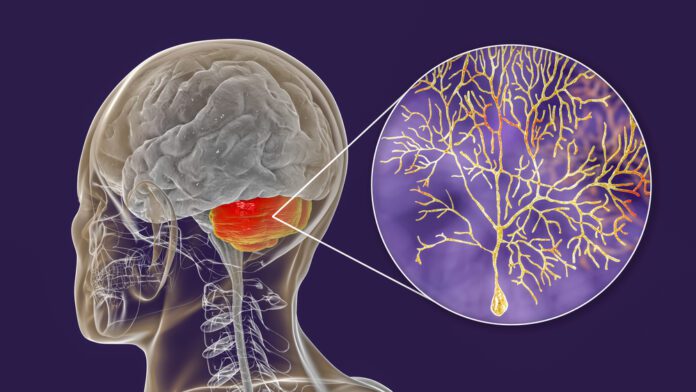Overview Of Ataxia – Acute Cerebellar
Acute Cerebellar Ataxia is sudden, uncoordinated muscle movement due to disease or injury to the cerebellum. This is the area in the brain that controls muscle movement. Ataxia means loss of muscle coordination, especially of the hands and legs.
Commonly Associated With
Cerebellar ataxia; Cerebellitis; Post-varicella acute cerebellar ataxia; PVACA
Causes Of Ataxia – Acute Cerebellar
In children, particularly younger than age 3, this condition may occur several days or weeks after an illness caused by a virus.
Viral infections that may cause this include chickenpox, Coxsackie disease, Epstein-Barr, echovirus, among others.
Other causes include:
- Abscess of the cerebellum
- Alcohol, medicines, and insecticides, and illicit drugs
- Bleeding into the cerebellum
- Multiple sclerosis
- Strokes of the cerebellum
- Vaccination
- Trauma to head and neck
- Certain diseases associated with some cancers (paraneoplastic disorders)
Symptoms Of Ataxia – Acute Cerebellar
Ataxia may affect the movement of the middle part of the body from the neck to the hip area (the trunk) or the arms and legs (limbs).
When the person is sitting, the body may move side-to-side, back-to-front, or both. Then the body quickly moves back to an upright position.
When a person with ataxia of the arms reaches for an object, the hand may sway back and forth.
Common symptoms of ataxia – acute cerebellar include:
- Clumsy speech pattern (dysarthria)
- Repetitive eye movements (nystagmus)
- Uncoordinated eye movements
- Walking problems (unsteady gait) that can lead to falls
Exams & Tests
The health care provider will ask if the person has recently been sick and will try to rule out any other causes of the problem. Brain and nervous system examination will be done to identify the areas of the nervous system that are most affected.
The following tests may be ordered:
- CT scan of the head
- MRI scan of the head
- Spinal tap
- Blood tests to detect infections caused by viruses or bacteria
Treatment Of Ataxia – Acute Cerebellar
Treatment depends on the cause:
- If the ataxia is due to bleeding, surgery may be needed.
- For a stroke, medicine to thin the blood can be given.
- Infections may need to be treated with antibiotics or antivirals.
- Corticosteroids may be needed for swelling (inflammation) of the cerebellum (such as from multiple sclerosis).
- Cerebellar ataxia caused by a recent viral infection may not need treatment.



